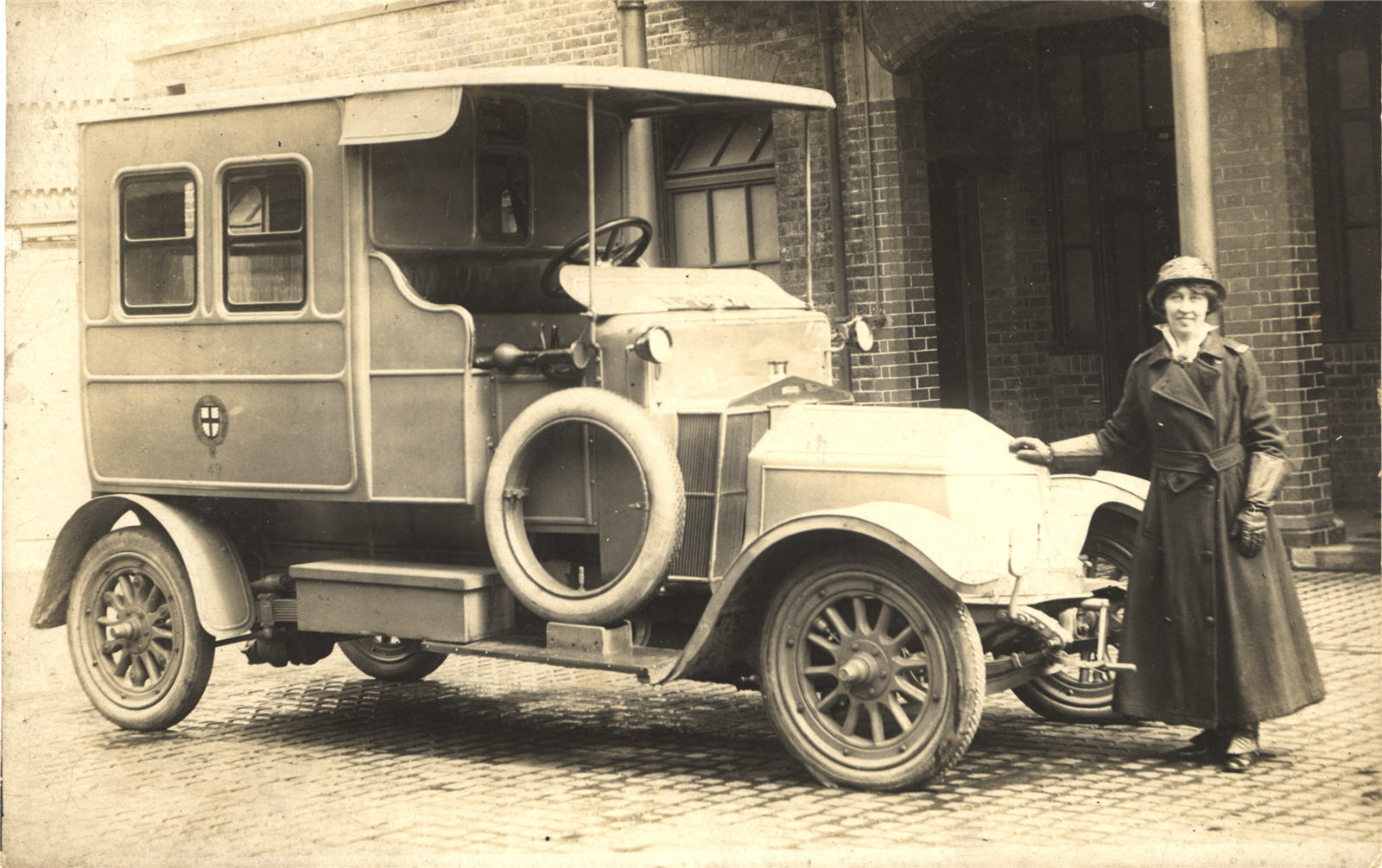Digital Gallery Browse
What do we see when we look closely?
Examine this picture of an ambulance from World War I—the first time motorized ambulances were used on battlefields.
Roll over different areas of the postcard to discover answers to the questions below.
-
- Q1Can you identify the gender of the driver?
- A1Women joined the Red Cross Voluntary Aid Detachments (VAD) as nurses and ambulance drivers. Over 2,500 women and men volunteers drive ambulances during the war.
-
- Q2Can you spot the Red Cross symbol?
- A2By the end of the World War I, the Red Cross provides 3,446 motor vehicles including 2,171 ambulances. Trains and boats are also equipped as mobile hospitals.
-
- Q3Can you spot a special feature of this ambulance?
- A3Ambulances provided by the Red Cross are specially built with rear windows and doors.
-
- Q1Can you identify the gender of the driver?
- A1Women joined the Red Cross Voluntary Aid Detachments (VAD) as nurses and ambulance drivers. Over 2,500 women and men volunteers drive ambulances during the war.
-
- Q2Can you spot the Red Cross symbol?
- A2By the end of the World War I, the Red Cross provides 3,446 motor vehicles including 2,171 ambulances. Trains and boats are also equipped as mobile hospitals.
-
- Q3Can you spot a special feature of this ambulance?
- A3Ambulances provided by the Red Cross are specially built with rear windows and doors.
- 1Can you identify the gender of the driver?
- 2Can you spot the Red Cross symbol?
- 3Can you spot a special feature of this ambulance?
















